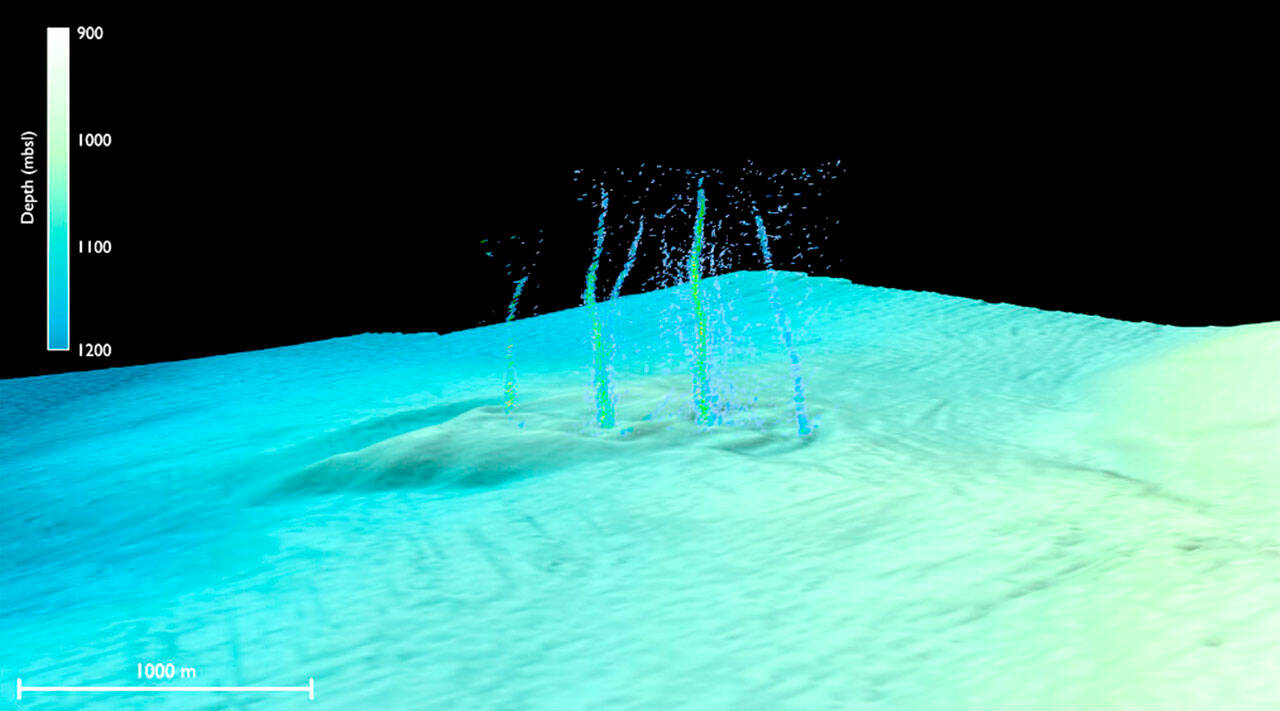An underwater spring is gushing water into the ocean at unprecedented levels giving researchers additional insights into plate tectonics but not — despite some news reports — any indications of an impending earthquake.
A seep of warm water about 50 miles off the coast of Newport, Ore., is spouting chemically distinct water into the ocean at rates not seen anywhere else in the world, but that doesn’t mean an earthquake is imminent, according to Evan Solomon, University of Washington oceanography professor.
“We’re not alarmed by the discovery,” said Solomon in a later interview. “The interesting thing about this site is the seep that we discovered has the highest flow rates of any we’ve seen.”
Solomon recently co-authored a study on the vent, and he said some news organizations have sensationalized the report’s findings, portraying the discovery as evidence the Cascadia Subduction Zone — a 600-mile fault line off the coast of the Pacific Northwest running from northern California up to British Columbia — was ready to blow.
That’s not the case, according to Solomon, who said he’s been answering emails from concerned citizens worried about an imminent earthquake.
But the vent — which has been dubbed “Pythia’s Oasis,” does give researchers more information on plate tectonics and what’s known as “locking,” he said.
Tectonic plates are massive pieces of the earth’s surface that rub up against each other, albeit incredibly slowly.
Locking is the region of the plate boundaries that stick, Solomon said, and that causes a build-up of stress that eventually erupts in an earthquake.
This particular vent was discovered about seven years ago, but Solomon said researchers believe it’s been active for at least 1,500 years.
Knowing about it doesn’t change ideas about earthquake hazards in the zone.
“Don’t freak out,” Solomon said. “The big thing is the seep site is exciting because the water flow rates are so high. It’s shedding a lot of light on the processes that lead to locking behavior in the subduction zone.”
While other known seeps release water at rates that amount to several centimeters per year, Pythia’s Oasis is sprouting water at several kilometers a year, or roughly half a liter per second, which Solomon called “incredible.”
The seafloor at the oasis is about one kilometer deep, Solomon said, and it’s coming from the plate boundary which is estimated to be another four kilometers down.
What’s also unique about the seep is that what is flowing out is mostly water rather than mostly gas. The water, which is about 16 degrees Fahrenheit warmer than the surrounding water, is also chemically distinct.
Water flowing out of the oasis is partly freshwater, Solomon said, but not the kind that’s found on the surface. This freshwater is created by seawater becoming chemically dehydrated from minerals in the sediment.
The water in-between plates is important for regulating pressure and stress but the high volume of seepage doesn’t mean an earthquake is pending, Solomon said. However, the new data from the oasis can be used in models that will, one day, be able to predict earthquakes.
“We’re still a long way out from predicting an earthquake,” Solomon said. “Estimates of earthquake hazard come from the earthquake record.”
A 9.0-magniture quake on the Cascadia Subduction Zone, which runs from northern California to British Columbia is estimated by researchers to strike about every 600 years. The Pacific Northwest is in year 322 of that cycle. The last one hit Jan. 26, 1700.
There’s a 15 percent chance in the next 50 years of the Cascadia Subduction Zone erupting in an earthquake, Solomon said, but that prediction is unchanged by the discovery of Pythia’s Oasis.
“The utility of these models is that, eventually, they’ll be used (to predict earthquakes),” Solomon said. “That’s still a long way out.”
________
Reporter Peter Segall can be reached at peter.segall@peninsuladailynews.com.

